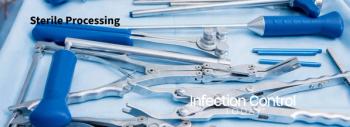
- Infection Control Today, July/August 2024 (Vol 28 No.4)
- Volume 28
- Issue 4
Infection Preventionists Advocate for Improved Medical Device Instructions for Use (IFUs)
IPs discuss APIC's white paper, which highlights IPs frustrations with outdated and unclear medical device IFUs and the challenges they face.
Recently, the Association for Professionals in Infection Control and Epidemiology (APIC) published the
After speaking with
- Marie H. Wilson, MSN, RN, CIC, FAPIC, is an infection Preventionist in the Quality Division at Fred Hutchinson Cancer Center in Seattle, Washington, and the 2024 APIC Communications Committee chair.
- Heather Ridge, BS, BSN, RN, CCHW, CIC, system infection prevention outpatient manager for Novant Health, Inc, in North Carolina. She is also the 2024 vice chair of the APIC Communications Committee.
- Michelle W. King, MT(ASCP), MPH, CIC, is the corporate director of infection prevention and control for the Department of Epidemiology at the McLeod Health System in Florence, South Carolina, and a member of the APIC Communications Committee.
Each IP gave examples of stories of challenging issues they have had with IFUs.
“For me, this white paper is the culmination of many years of IPs' experience being a middle person between manufacturers and regulators in terms of the appropriate use of devices in the healthcare setting, and important to us is their cleaning and disinfection,” Wilson said. “So, there have been a number of issues that have been identified in the white paper that are going to resonate with infection preventionists that read it through our experiences in health care, even maybe before we were IPs in health care, and so I appreciate APIC taking this step to recognize that we are just messengers in this process. And we need some support from the manufacturers and regulators for real, sustainable change to improve the health care safety environment.”
King agreed, “One of the most important parts of the white paper was their recommendations. That standardized format for IFUs and making the IFUs last for the lifespan of the product indicate when the IFP was last updated because that's important as well. One of my pet peeves was making sure that you're not too vendor-specific on the products that are recommended for cleaning.”
All 3 IPs agreed that APIC’s paper on IFUs was comprehensive and well laid out. Ridge said, “The action plan is just perfectly in line [with] where we need to go, especially as an organization for infection prevention…. The only thing I would like to hear a little bit more focus on is that we have this great partnership with our vendors, and we are very active with our sponsors and our national committee. However, we push that relationship that the vendors need to have and know about infection prevention because sometimes it goes beyond just a sellable product. It's what's feasible for the end user to do. They're not always in the same, again, same understanding as we do. So, to make sure that vendors understand what's out there, what's normal, how do we partner together, and we're going to ask questions, and it's going to take a while to have that collaboration in place.”
Articles in this issue
over 1 year ago
Dining Recommendations for Long-Term Care Facilitiesover 1 year ago
Bug of the Month: I Like Animals and a Few Peopleover 1 year ago
Infection Prevention Implication for Organ Donation Programover 1 year ago
APIC Launches PolicyPro for Infection Control and Preventionover 1 year ago
Standardizing Cleaning Protocols Across the Care ContinuumNewsletter
Stay prepared and protected with Infection Control Today's newsletter, delivering essential updates, best practices, and expert insights for infection preventionists.






